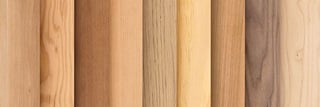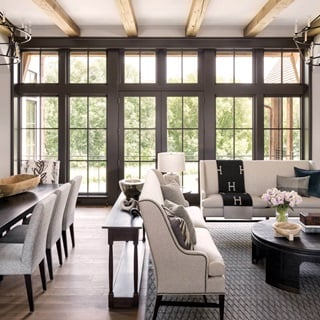How-to
Types of Wood for Doors & Windows: Oak vs. Pine vs. Mahogany
A lifelong wood expert reveals what you should know about wood for windows and doors.
This is why wood scientists exist, and why Marvin relies on in-house, advanced degree-holding wood scientists to inform their research and manufacturing processes. If you’re advising customers on what type of wood might be best for windows and doors, you’ll want to know why Marvin’s Wood Scientist, Ben Wallace, thinks Pine is extremely underrated, Oak is a bit high-maintenance, and why you shouldn’t just take a supplier’s word for it when they say they’re selling you Honduran Mahogany.
What Types of Wood is Used for Windows?
Marvin offers three types of wood for the exterior: Pine, Douglas Fir, and Honduran Mahogany, with additional options in our clad wood offerings.
Pine is the go-to choice and all our windows are designed with pine.
Sometimes a different look is desired, and Douglas Fir shows more vertical grain, even through the finish. It is also a slightly more durable option than pine because it contains more heartwood, but keep in mind that a lot of the durability comes from the design of a window and if it’s designed to resist water well.
Honduran Mahogany is the most stable and durable wood option and will perform well for a long time. The one place to avoid using Honduran Mahogany is in a condensing environment, such as a pool or hot tub room.
Here, Wallace shares five things you probably don’t know about wood and windows.
Tips About Types of Wood for Windows & Doors
Best Type of Wood For Window
For any window project, the best type of wood will depend on several factors, including the climate, the house type, the amount of overhang, and the desired look. Pine will work well in most environments and all Marvin windows are designed with pine. If a different look is desired, you can opt for Douglas Fir or Honduran Mahogany, which is the most durable, will perform well for a long time, and is decay resistant.
Best Type of Wood for Exterior Doors
The same wood options that are best for windows also apply to patio doors. For entry doors, Honduran Mahogany is the best option in terms of stability, durability, and performance. African Mahogany is not quite as stable, doesn’t finish as well and is not as decay resistant. With Mahogany, be sure to use a good stain blocking primer with paint.
If you live in a moderate climate and have the required overhang, feel free to pick whatever wood you like the look of.
What is the Best Wood For Exterior Door Frames?
Selecting wood for door frames follows the same guidance as above. But it's important to make sure the door frame is treated. All Marvin and exterior TruStile door frames are treated, but not all manufacturers treat their frames, and it helps to make doors last longer. Or use an exceptionally durable species like Honduran mahogany.Collections Made with Wood:
Marvin Ultimate
Marvin Elevate®
Related Content

Product Design Options | Wood
Wood offers a rich, warm look, many customization options, and design versatility. Marvin wood windows and doors utilize premium quality wood. Learn more!

Marvin Elevate Collection
With warm wood interiors and timeless beauty, Marvin Elevate™ Collection windows and doors are made of fiberglass to outlast vinyl, aluminum and composites.

Marvin Signature Collection | Ultimate
The Ultimate product line offers beautiful design, craftsman-quality construction, and a vast selection of shapes, styles, sizes, and options.

Request Literature
Whether you desire design inspiration or are searching for more information, Marvin offers a wide array of brochures and catalogs to help with your next project.

